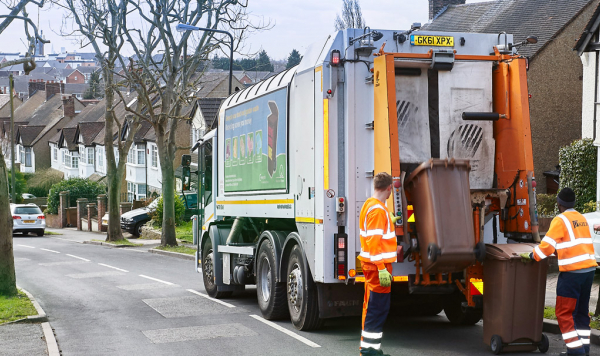Request
Deputation to North London Waste Authority against the Edmonton incinerator rebuild. Signed by: Dr Rebecca Redwood, GP, who will address the meeting; Dr Deepa Shah, GP ; Dr Lynne Jones OBE, Consultant Child and Adolescent Psychiatrist; Dr Rosa Roberts, Psychiatry Core Trainee and Dr Honey Smith.
We are asking the North London Waste Authority to pause and review their plans to build a new incinerator in Edmonton as air pollution and the climate emergency are preventable causes of disease and death.
Air pollution causes around 40,000 deaths per year in the UK. It has been linked to cancer, asthma, stroke and heart disease, diabetes, obesity, and changes linked to dementia. The health problems resulting from exposure to air pollution have a high cost to people who suffer from illness and premature death, to our health services and to business. In the UK, these costs add up to more than £20 billion every year. (1) Air pollution is also associated with increased rates of autism (2) and preterm birth, low birth weight and still birth (3). There is evidence that increased air pollution allows pathogens such as coronavirus to spread further. (4)
The incinerator will release ultra-fine particulate matter (PM1 and PM0.1) that cannot be filtered. According to the World Health Organization, for the very smallest particles, there’s no safe threshold below which no damage to health is observed. (5)
There has been no modelling of the plumes and no health impact assessment conducted on the short or long term exposure to the particulate matter from the plumes.
Air pollution affects deprived communities more which makes existing health inequalities worse. (6)
Dramatic improvements in health have been shown to occur when air pollution is reduced. (7)
Moving the waste into North London will produce additional carbon emissions and road congestion with its own negative effects on health.
The climate emergency is a public health emergency. Over the next 50 years, the proposed facility would produce as much CO2 as all of London does in two full years. It would produce 700,000 tonnes of CO2 pollution per year.
The climate emergency will have terrible consequences for health. There are direct risks from floods, heatwaves, droughts and wildfires. There are health effects from increased air pollution and allergens, decreased water quality, and food scarcity. Infectious diseases will increase. Forced migration will increase due to the climate emergency, which has negative health consequences as does damage to health services infrastructure. There are also negative economic effects due to declining labour productivity from rising temperatures. The climate emergency will cause increased conflict and violence. The climate emergency will also damage people’s mental health. The groups most vulnerable to climate change related health effects are children, older people, those who are sick, and migrating and marginalised populations. (8)
As doctors we work daily to save lives. By making a decision to pause and review this incinerator you will save more lives than we will in our entire careers. (9)
It’s easy to clap for the NHS. We are asking you to actually support the NHS by pausing the incinerator and so reducing rates of preventable death and disease.
Response
Dear Dr Redwood,
I am writing to you regarding your deputation to the North London Waste Authority (NLWA) meeting on Thursday 25 June 2020 given on behalf of Dr Shah, Dr Jones, Dr Roberts and Dr Smith. This was in relation to the North London Heat and Power Project (NLHPP). I would like to thank you for joining the meeting and setting out the issues you wanted to draw to Members’ attention.
Following a thorough review of the proposed project, including the points raised in the deputations, I am letting you know that Members unanimously approved the start of procurement for the new Energy Recovery Facility (ERF). As promised in the meeting, we are responding in writing to each deputation. I have outlined the key points you raised and provided a response for each below, to advise you of Members’ understanding of these issues in making their decision.
In your deputation you claimed that air pollution causes around 40,000 deaths each year, linked to cancer, asthma, stoke, heart disease, diabetes, obesity and changes linked to dementia. We want to reassure you that we are using the highest performing emissions-cleaning technologies, making our ERF one of the safest, cleanest, and highest performing in the world. Our facility will be the first in the country to use Selective Catalytic Reduction to control emissions of nitrogen oxide (NOx), which is the same proven technology used in the Amager Bakke facility in Copenhagen – often pointed to as a global benchmark for emissions cleaning technology. This high-performing method to control emissions will reduce NOx emissions to 60% of the limits set by the European Union’s Industrial Emissions Directive. We are constantly looking into new global technologies to reduce our emission impact even further. Across the UK, energy from waste is a very small contributor of particulates. The Environment Agency is clear that only 0.05% of PM2.5 is produced by EfW compared to 34.3% from domestic wood burning and 5.35% from road traffic. For NOx, energy from waste causes 1.12% of emissions, compared to 33.5% for road traffic. Public Health England (PHE) is clear that modern, well run and regulated municipal waste incinerators are not a significant risk to public health. Last year, PHE reviewed their statement on the basis of a major study by Imperial College London. The guidance remains unchanged on the basis of this up-to-date and comprehensive evidence. In your deputation you claimed that there is evidence that increased air pollution allows pathogens such as Coronavirus to spread further. The ERF will be not be a source of pathogens. Waste is combusted at a high temperature under controlled conditions, which destroys pathogens. Any air pollutants will be emitted at a high level away from sources of pathogens – which means they cannot be spread. In your deputation you suggested that the incinerator will release ultra-fine particulate matter that can’t be filtered. The ERF will not release ultra-fine particulate matter that can’t be filtered. The ERF will use proven baghouse filters to capture and control particulates, including ultrafine particles. The UK Air Quality Action Group, which advises the Government on air quality, is clear that modern ERFs are very effective at controlling particulates, and that there are multiple studies to back this up. Public health guidance is made on the basis of multiple studies and the associated weight of evidence. As a result of the ERF emission controls and the high altitude of discharge, the contribution of the facility to pollutant concentrations at ground level is small. For the large majority of the year, its contribution is effectively zero and the predicted concentrations are well below the limits of detection. It would only be for a few hours a year that the contribution of the ERF would be measurable and this would be at levels of less than 2% of the relevant air quality standard for all but a few hours each year. In comparison, transport causes 29.6%, industry and commercial practices cause 11.2%, and biomass burning (including wood burning) causes 7.6%. The figures are from the London Emissions Inventory run by the Greater London Authority (GLA).
In your deputation you stated that no modelling of the plumes has been undertaken and no health impact assessment has been conducted on the short or long-term exposure to the particulate matter from the plumes. It is incorrect to suggest that no modelling was undertaken. Comprehensive modelling of the plume was undertaken for the Development Consent Order (DCO)which formed part of our 2,000- page Environmental Statement. This was reviewed and accepted by an independent Planning Inspector and experts at the Environment Agency. The impact of particulates has been assessed by comparing predicted changes in concentrations with health-based air quality standards. The analysis shows that emissions from the ERF will be well within the European Union Air Quality Limit Values for particulates. Concentrations of particulates in existing energy recovery facilities have been compared with the health-based limits set by the Environment Agency. Generally, existing facilities, including our plant at Edmonton, operate at around 10% of the safe limit for particulates. We expect our new ERF to be in line with the performance of the existing plant. The facility will operate under an environmental Permit, in accordance with the stringent public health standards set by the Environment Agency.
In your deputation you claimed that the climate emergency is a public health emergency. As a public authority, bringing forward measures to tackle the Climate Emergency is a vital part of the public service we provide to our residents. Our Project will save up to 210,000 tonnes of CO2 every year compared to landfill. It is therefore a major part of the solution to protecting our environment for future generations.
If you have any further questions about the Project or require any clarifications, I would be happy to answer them or arrange a briefing at a suitable time.
Yours sincerely,
Cllr. Clyde Loakes


